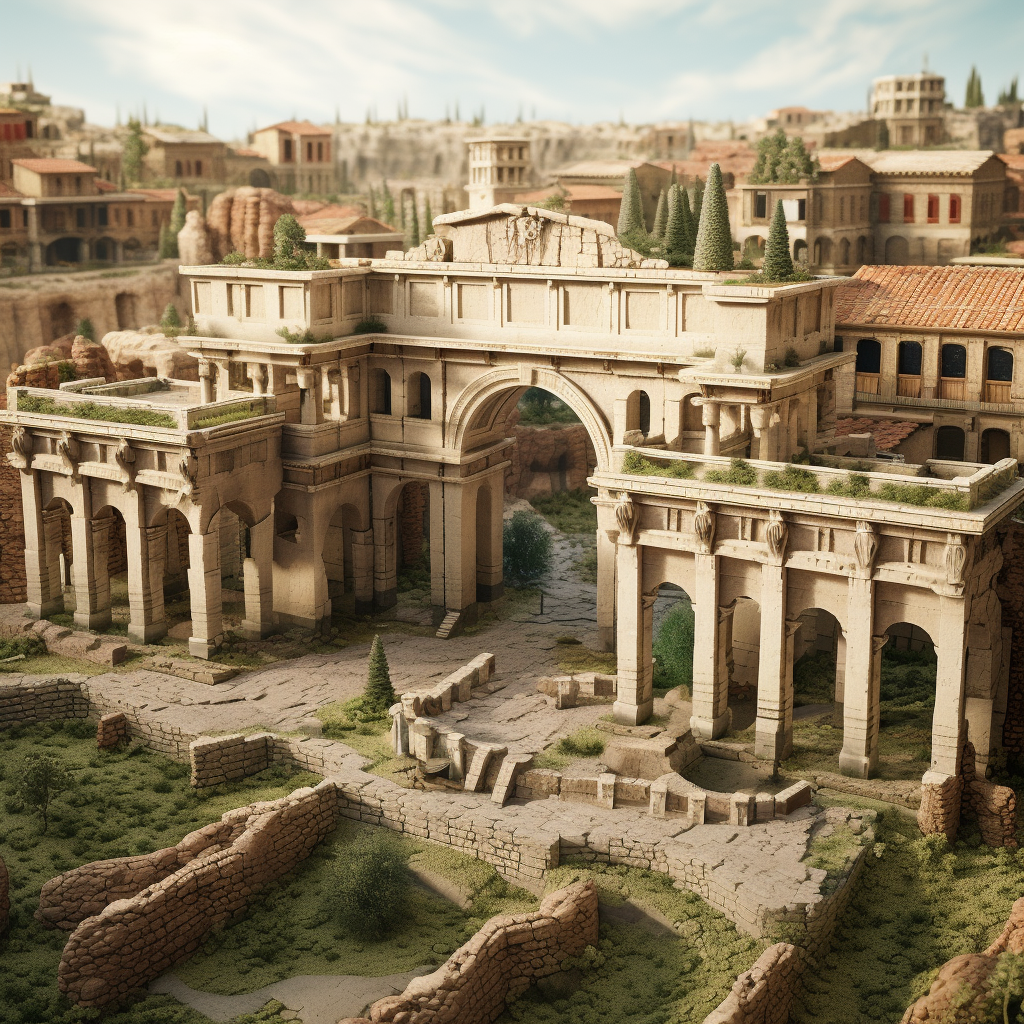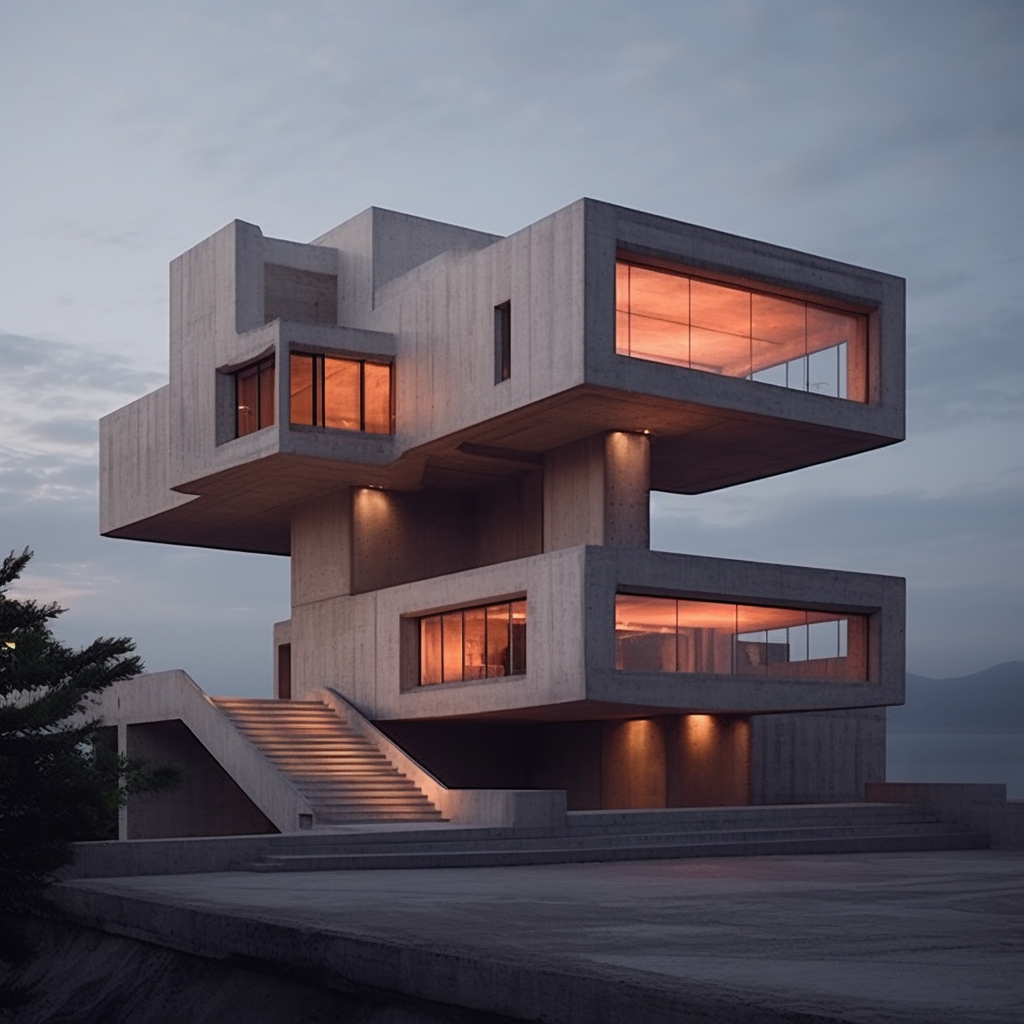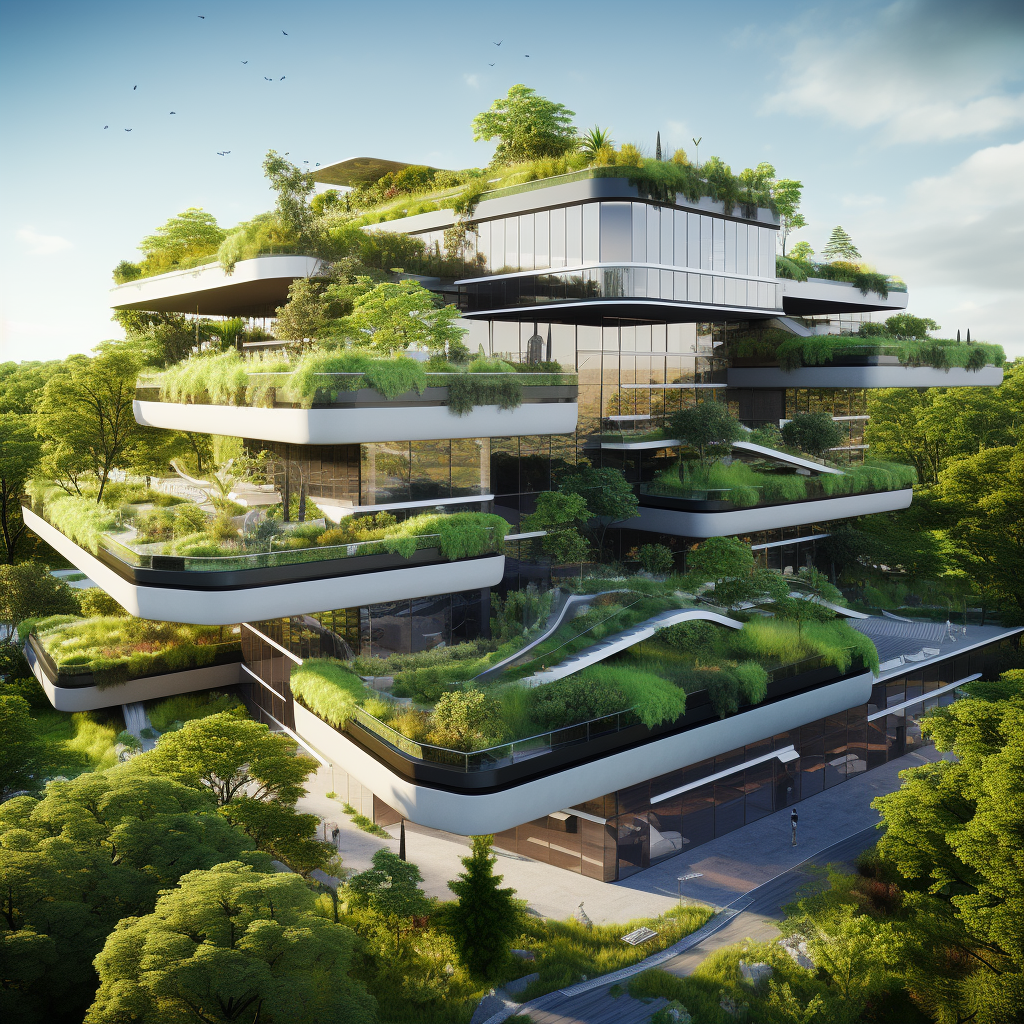Delve into the transformative journey of concrete and its pivotal role in shaping modern architectural marvels.
Early Beginnings and Innovations
Trace back to the early days of concrete use in architecture, highlighting its evolution from a basic construction material to a versatile and sophisticated element in modern design.
-
Roman Architectural Wonders:
The Romans were pioneers in the use of concrete, a fact prominently evident in their architectural legacy. Roman concrete, or ‘opus caementicium’, was a revolutionary material composed of lime mortar, volcanic sand, water, and small stones. This composition was crucial in constructing enduring structures like the Colosseum and the Pantheon. The Pantheon, with its unreinforced concrete dome, remains the largest of its kind in the world, showcasing the extraordinary potential of Roman concrete engineering.
These ancient structures not only exemplify the durability and strength of Roman concrete but also its versatility. The Roman architects’ skill in molding concrete enabled them to create a variety of shapes and forms, from the massive arches of the Colosseum to the elegant curves of the Pantheon’s dome. This early use of concrete laid the groundwork for future architectural innovations, making it a cornerstone in the history of construction materials.
-
Post-War Transformations:
Following the devastation of World War II, concrete became a symbol of modernization and reconstruction. It played a pivotal role in rebuilding efforts, particularly in war-torn Europe, where cities needed quick and cost-effective solutions to housing and infrastructure challenges. This period marked the rise of Brutalism, an architectural style characterized by stark, imposing structures made predominantly from raw, unfinished concrete. Buildings such as the Unité d’Habitation by Le Corbusier exemplified this style, representing a new era of architectural design focused on minimalism, functionality, and the honest expression of materials.
The post-war era witnessed an explosion of concrete usage, facilitating the rapid expansion of urban environments. It allowed architects and city planners to reimagine urban landscapes, creating structures that were both practical and symbolically potent. The versatility of concrete during this period transcended mere functionality; it became a canvas for architectural innovation, reflecting the societal shift towards modernity and the future.
-
Architectural Icons:
In the realm of modern architecture, concrete has been instrumental in realizing some of the most iconic and innovative structures around the globe. Architects like Zaha Hadid have utilized concrete’s fluidity to create dynamic, sculptural forms as seen in the Heydar Aliyev Center in Azerbaijan. Its sweeping, wave-like contours challenge conventional architectural norms and demonstrate concrete’s capacity for creating fluid, organic shapes that defy traditional building forms.
Similarly, Japanese architect Tadao Ando has explored the minimalist and introspective potential of concrete in his works. His Church of Light in Osaka is a testament to the poetic and serene qualities of concrete, using light and shadow to create a space of contemplation and spiritual calm. These architectural masterpieces underscore concrete’s versatility, not just as a building material, but as a medium for artistic and expressive design, pushing the boundaries of what is architecturally possible.

Modern Concrete in Contemporary Design
Discuss the resurgence of concrete in contemporary architecture, focusing on its aesthetic flexibility, durability, and modern applications.
-
Brutalism and Beyond:
Brutalism, a movement that flourished from the 1950s to the mid-1970s, marked a significant chapter in the story of concrete in architecture. Characterized by its raw, unrefined use of concrete, Brutalism represented a stark departure from traditional architectural aesthetics. The style, often seen in government buildings, universities, and housing projects, emphasized the power and simplicity of concrete. Buildings like the Barbican Estate in London and Boston City Hall in the US showcased the rugged beauty and imposing presence of concrete, making a bold statement on architectural functionality and expression.
Despite its initial popularity, Brutalism later faced criticism for its cold and austere appearance, leading to a decline in its use. However, in recent years, there has been a renewed interest in Brutalist architecture, with many viewing these concrete structures as cultural icons. This resurgence highlights concrete’s enduring influence and adaptability in architectural trends, evolving beyond its Brutalist legacy to inspire new, innovative design approaches.
-
Technological Advancements:
The technological evolution of concrete has significantly expanded its capabilities and applications in modern construction. Advancements in concrete mixtures and reinforcement techniques have led to stronger, more durable, and versatile concrete. High-performance concrete, for instance, offers enhanced strength and durability, enabling the construction of taller, more slender structures with greater spans. Moreover, innovations like fiber-reinforced concrete have improved its tensile strength, allowing for more daring architectural designs.
Another significant advancement is the development of environmentally friendly concrete options. These include the use of industrial by-products like fly ash and slag, which not only reduce the environmental impact of concrete production but also enhance the material’s properties. The advent of 3D printing in concrete technology is also opening up new possibilities for complex, cost-effective, and time-efficient construction methods, further cementing concrete’s role as a cornerstone of modern architecture.
-
Decorative Concrete:
Decorative concrete has emerged as a fusion of functionality and artistry in modern design, showcasing the aesthetic potential of this versatile material. Advances in coloring, texturing, and polishing have transformed concrete from a mere structural element into a medium of artistic expression. Stamped concrete, which can mimic the look of stone, brick, and other natural materials, offers endless possibilities for creative landscaping and architectural detailing. Similarly, stained concrete, with its vibrant hues and unique finishes, brings a splash of color and character to both interior and exterior spaces.
Polished concrete floors, with their sleek, reflective surface, are becoming a popular choice in commercial and residential properties for their blend of beauty and practicality. The use of exposed aggregate concrete in façades and walkways adds texture and visual interest, further demonstrating concrete’s versatility. These decorative applications not only enhance the aesthetic appeal of buildings and landscapes but also contribute to sustainable design practices by reducing the need for additional finishing materials.

Concrete’s Role in Sustainable Architecture
Examine the role of concrete in the growing field of sustainable architecture, focusing on eco-friendly practices and the material’s adaptability for green building designs.
-
Eco-Friendly Concrete Mixes:
The development of green concrete mixes marks a significant stride towards environmental sustainability in construction. By incorporating recycled materials such as fly ash, slag, and recycled aggregates, green concrete not only reduces waste but also diminishes the reliance on virgin materials. These eco-friendly mixes contribute to a notable reduction in the carbon footprint of concrete production. The use of such sustainable materials does not compromise the quality or performance of concrete; instead, it often enhances its durability and strength, making it a viable choice for various construction needs.
Further, the implementation of green concrete aligns with global efforts to curb carbon emissions and promotes responsible resource usage. This approach is especially vital in urban development, where concrete use is extensive. The adoption of green concrete is increasingly encouraged by governmental policies and building standards, demonstrating a collective movement towards more environmentally conscious construction practices.
-
Energy Efficiency:
Concrete plays a pivotal role in energy-efficient building designs, primarily due to its thermal mass properties. The ability of concrete to absorb and retain heat makes it an excellent material for regulating indoor temperatures. This characteristic is particularly beneficial in passive solar designs, where concrete’s thermal mass helps to store heat from the sun during the day and release it slowly at night, reducing the need for artificial heating and cooling. Such energy-efficient designs not only lower operational costs but also contribute to the building’s overall environmental sustainability.
Additionally, advancements in concrete technology have led to the creation of insulating concrete forms (ICFs) and aerated concrete, which offer improved insulation properties. These innovations further enhance the energy efficiency of concrete structures, making them suitable for a wide range of climates and reducing the overall energy consumption of buildings. As energy efficiency becomes a paramount concern in modern construction, concrete’s evolving role in sustainable building design becomes increasingly significant.
-
Future Innovations:
The future of concrete technology holds immense potential for transforming urban environments into more sustainable and resilient spaces. Emerging innovations in concrete technology are poised to address some of the most pressing environmental challenges. For instance, the development of self-healing concrete, which can repair its own cracks, reduces maintenance needs and prolongs the lifespan of structures. Additionally, research into carbon-capturing concrete offers a groundbreaking way to reduce the carbon footprint associated with concrete production.
Looking ahead, advancements in 3D printing with concrete promise to revolutionize the construction industry by enabling more efficient, cost-effective, and customizable building methods. The potential integration of smart sensors within concrete structures for real-time monitoring and data collection could lead to smarter, more adaptive urban infrastructures. These innovations not only exemplify concrete’s versatility but also its capability to contribute significantly to the creation of sustainable and resilient urban futures.


Comments